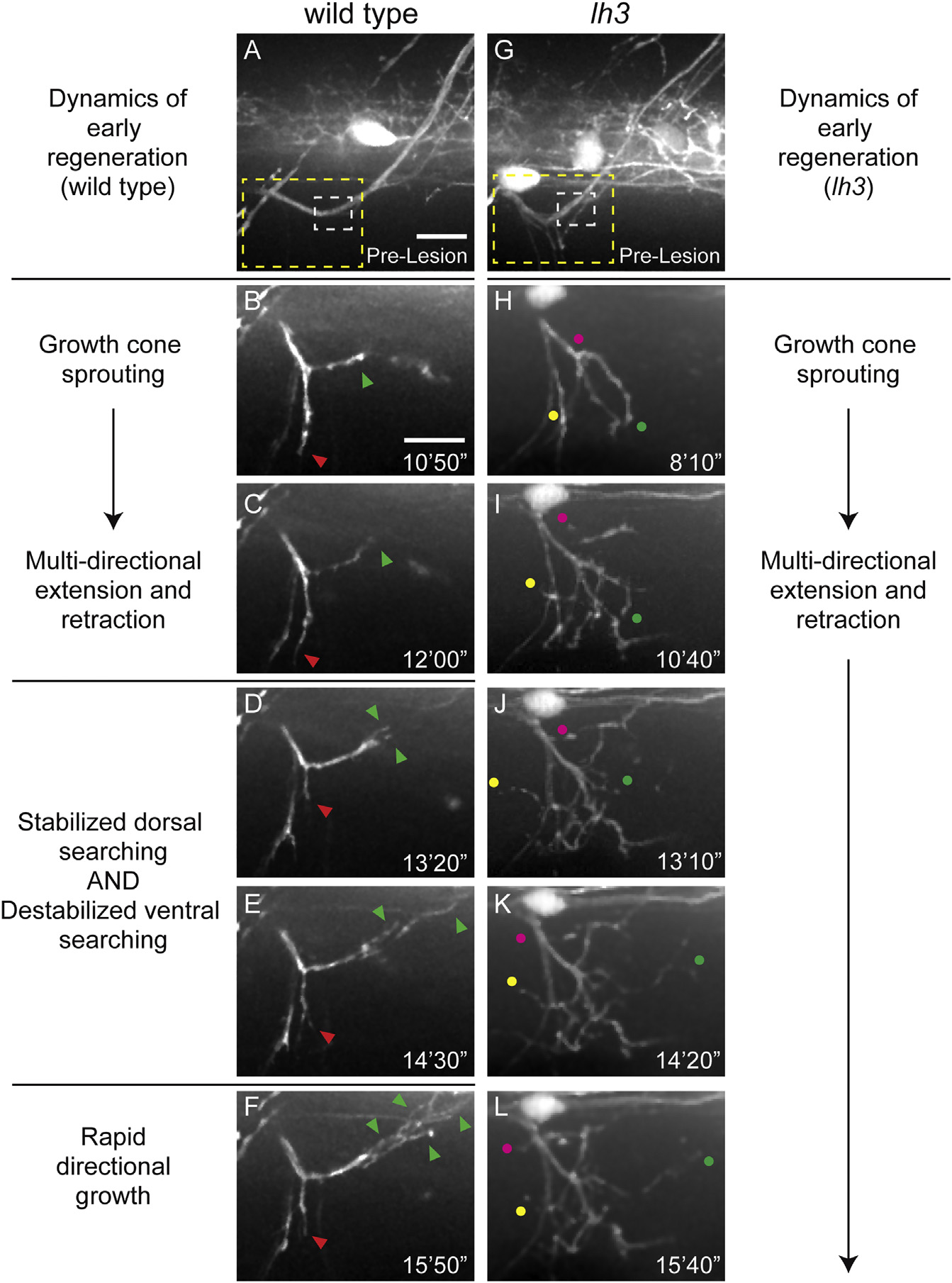Fig. 2
lh3 Is Required for Pathway Stabilization in Early Regeneration
(A) Wild-type dorsal nerve prior to nerve transection (white dashed box, transection site; yellow dashed box, region magnified in B–F; scale bar, 10 µm).
(B and C) Regenerating wild-type dorsal growth cones (B) and probe the injury gap (C) through multi-directional extension and retraction (red arrowhead, ventral probing; green arrowhead, dorsal probing; scale bar, 10 µm).
(D–F) Axons then destabilize non-dorsal searching and stabilize dorsal searching at <13 hpt (D) to ~14 hpt (E) leading to rapid directional growth (F; n = 8 larvae, 15/16 nerves).
(G) Conditional lh3 mutant dorsal nerves develop indistinguishably from wild-type (white dashed box, transection site; yellow dashed box, region magnified in H–L).
(H–L) In the absence of lh3, axons sprout growth cones (H) after transection. Axons probe the myotome multi-directionally at 10 hpt (I), 13 hpt (J), 14 hpt (K), and 15 hpt (L; magenta, yellow and green dots track individual fascicles) but fail to stabilize dorsal searching and destabilize ventral searching (n = 11 larvae, 10/26 nerves). When lh3 mutant axons stabilized growth, these axons often grew on non-dorsal paths (n = 8/26 nerves, p < 0.001).

